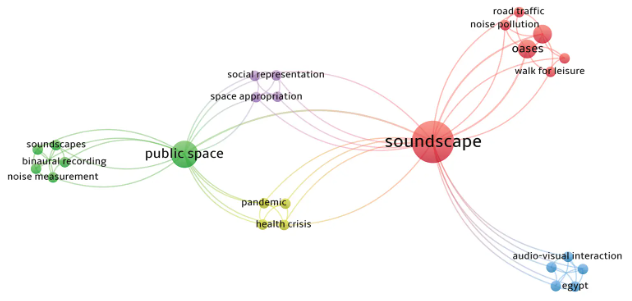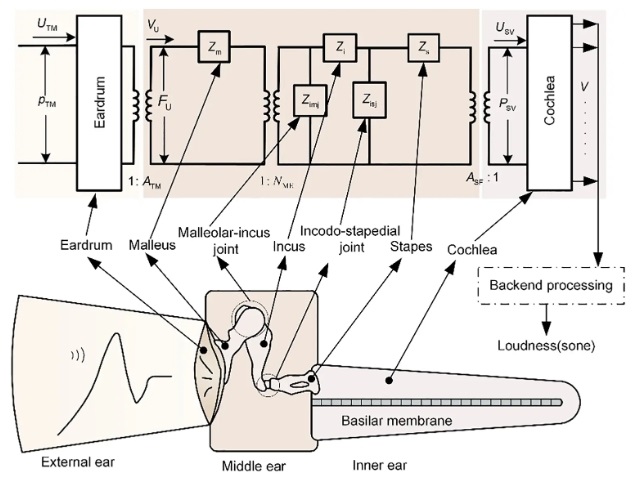Focusing properties of linear phase-conjugate array
Abstract
Phase conjugation generates a backpropagating field that refocuses on the original source, rendering it an effective technique for sound source localization. In addition, linear arrays are widely used in underwater source localization. Therefore, investigating the focusing properties of a linear phase-conjugate array is crucial. This study analyzes the backpropagating field produced by phase-conjugate arrays, proposing indicators for focus bias (FB), focal point size (FS), and sidelobe interference (SLI) to quantitatively characterize these properties. Numerical simulations of the focusing properties of monopole phase-conjugate (PCM), dipole phase-conjugate (PCD), and perfect phase-conjugate (PCP) arrays for a single-frequency point source are conducted to evaluate the effects of array aperture, element spacing, source-to-array distance, and source bias on the different focusing properties of each array. The results indicate that focus bias and focal point size are primarily associated with the array angular aperture (determined by array aperture, source-to-array distance, and source bias); element spacing is the primary factor influencing sidelobe interference. Under identical array configurations, the focus bias of the three phase-conjugate arrays is similar, while the PCM array exhibits the smallest focal spot size, and the PCD array displays the least sidelobe interference.
References
[1]Hu, Z., Huang, J., Xu, P., Nan, M., Lou, K., et al. (2021). Underwater Acoustic Source Localization via Kernel Extreme Learning Machine. Frontiers in Physics, 9, 653875.
[2]Anderson, B.E., Griffa, M., Larmat, C., Ulrich, T.J., Johnson, P.A. (2008). Time Reversal. Acoustics Today, 4(28), 5-16.
[3]Li, S., Li, T., Liu, S. (2017). Phase-conjugate arrays and phase-conjugated fields produced by the arrays. Chinese Journal of Ship Research, 12(1), 107-115 (133).
[4]Gan, W.S. (2021). Time Reversal Acoustics. Singapore: Springer Nature Singapore.
[5]Dowling, D.R., Jackson, D.R. (1998). Phase conjugation in underwater acoustics. The Journal of the Acoustical Society of America, 89(1), 171-181.
[6]Rossing, T.D. (2014). Springer Handbook of Acoustics. New York: Springer.
[7]Kuperman, W.A., Hodgkiss, W.S., Song, H.C. (1998). Phase conjugation in the ocean: Experimental demonstration of an acoustic time-reversal mirror. The Journal of the Acoustical Society of America, 103(5), 25-40.
[8]Fink, M., Cassereau, D., Derode, A., Prada, C., Roux, P., et al. (2000). Time-reversed acoustics. Reports on Progress in Physics, 63, 1933–1995.
[9]De Rosny, J., Fink, M. (2007). Focusing properties of near-field time reversal. Physical Review A, 76(6), 637-640.
[10]Fannjiang, A.C. (2009). On time reversal mirrors. Inverse Problems, 25(9), 095010.
[11]Harker, B.M., Anderson, B.E. (2013). Optimization of the array mirror for time reversal techniques used in a half-space environment. The Journal of the Acoustical Society of America, 133(5), EL351.
[12]Yang, T.C. (2002). Temporal resolutions of time-reversal and passive-phase conjugation for underwater acoustic communications. IEEE Journal of Oceanic Engineering, 28(2), 229-245.
[13]Godin, O.A., Katsnelson, B.G., Qin, J., Brown, M.G., Zabotin, N.A., et al. (2017). Application of time reversal to passive acoustic remote sensing of the ocean. Acoustical Physics, 63(3), 309-320.
[14]Walker, S.C., Kuperman, W.A., Roux, P. (2006). Active waveguide Green's function estimation with application to time-reversal focusing without a probe source in a range-independent waveguide. The Journal of the Acoustical Society of America, 120(5), 2755-2763.
[15]Rouseff, D., Jackson, D.R., Fox, W.L.J., Jones, C.D., Ritcey, J.A., et al. (2001). Underwater acoustic communication by passive-phase conjugation: theory and experimental results. IEEE Journal of Oceanic Engineering, 26(4), 821-831.
[16]Hodgkiss, W.S., Song, H.C., Kuperman, W.A., Akal, T., Ferla, C., et al. (1999). A long-range and variable focus phase-conjugation experiment in shallow water. The Journal of the Acoustical Society of America, 105(3), 1597-1604.
[17]Morse, P.M., and Ingard, K.U. (1968). Theoretical acoustics. Princeton: Princeton University Press.
[18]Booth N.O., Abawi A.T., Schey P.W., and Hodgkiss W.S. (2000). Detectability of low-level broad-band signals using adaptive matched-field processing with vertical aperture arrays. IEEE Journal of Oceanic Engineering, 25(3), 296-313.
[19]Gemba K.L., Hodgkiss W.S., and Gerstoft P. (2017). Adaptive and compressive matched field processing. The Journal of the Acoustical Society of America, 141(92), 92-103.
[20]Hursky P., Hodgkiss W.S., and Kuperman W.A. (2001). Matched field processing with data-derived modes. The Journal of the Acoustical Society of America, 109(4), 1355-1366.
Copyright (c) 2024 Jiang Liu, Sheng Li

This work is licensed under a Creative Commons Attribution 4.0 International License.









